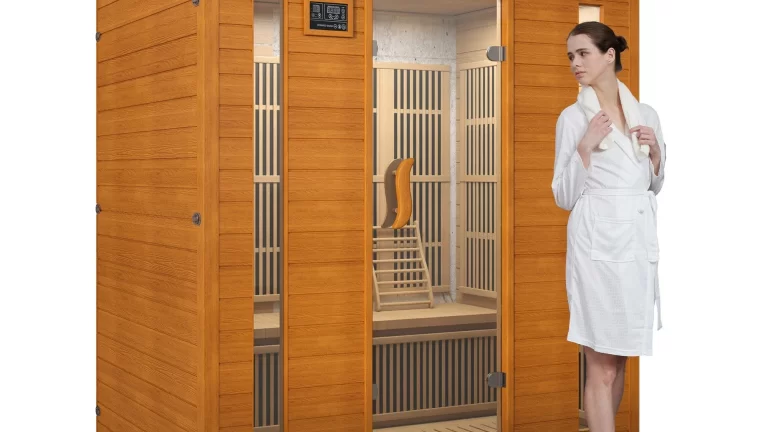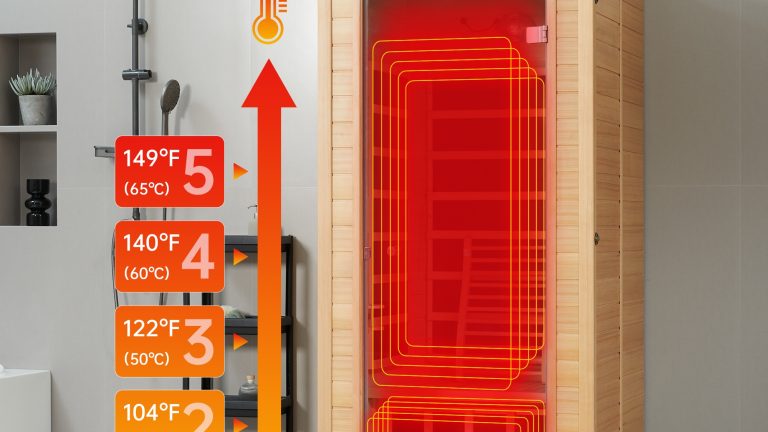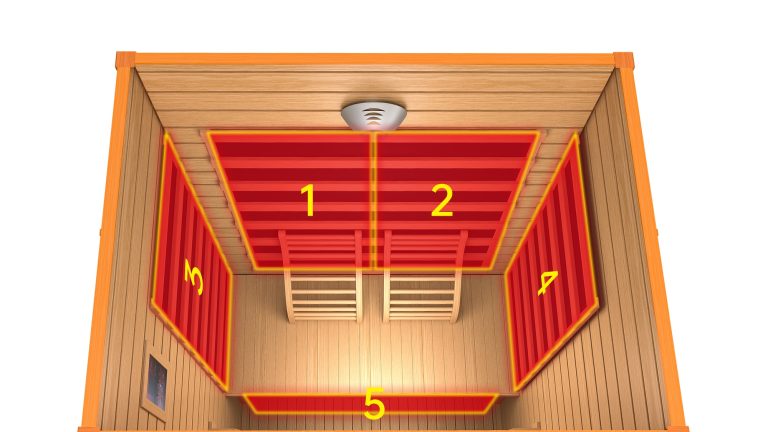If you’re considering investing in an infrared sauna, one important feature to look for is low EMF (electromagnetic field) emissions. EMF exposure has raised concerns for many people, especially with the growing use of technology in our daily lives. The good news is that some infrared saunas are designed to emit low or minimal EMF, making them a safer choice for those who want to reduce their exposure. But how can you test whether your infrared sauna is truly low EMF? Let’s take a closer look at the process and what you should keep in mind when choosing the best infrared sauna for your needs.
What is EMF and Why Should You Care?
First, let’s clarify what EMF is. Electromagnetic fields are produced by electrical devices and power lines. EMF exists everywhere—from your phone, microwave, and Wi-Fi routers to your television and even household appliances. While most people are exposed to low levels of EMF, there’s been increasing concern about the potential health effects of long-term exposure to higher levels of EMF.
When it comes to infrared saunas, the concern is that the infrared heaters used to generate heat could emit EMF, especially in lower-quality models. Some people are more sensitive to EMF exposure, and while studies on the long-term effects of EMF are still ongoing, many sauna users prefer to choose models that emit low or no EMF.
A low EMF infrared sauna is designed to minimize or eliminate this risk, offering a more health-conscious option for those who want to enjoy the benefits of infrared heat without the potential downsides of EMF exposure.
How Does EMF in an Infrared Sauna Work?
Infrared saunas use electromagnetic energy to heat the body, and this process can emit EMF. The infrared heaters in a sauna generate heat using a type of light called infrared radiation, which is different from the type of radiation that we typically associate with harmful EMF (like the EMF from cell phones or microwaves).
In a real relax infrared sauna, for example, the infrared heaters work by emitting infrared light that heats your body directly rather than heating the air around you. While this process is safe and effective, it can also generate EMF. However, some saunas are designed with low EMF technology to ensure that the levels of electromagnetic radiation are as low as possible.
What Makes a Sauna Low EMF?
When you’re looking for an infrared sauna with the lowest EMF, the key factors to consider are the type of heaters used, the materials the sauna is made from, and the technology behind its design. Here are a few things that can help reduce EMF in infrared saunas:
Carbon Heaters: Many high-quality infrared saunas, like a one person far infrared sauna, use carbon heaters rather than ceramic heaters. Carbon heaters tend to emit lower levels of EMF because they use a more even, spread-out form of heating. Ceramic heaters, on the other hand, tend to generate more localized heat and can sometimes emit higher levels of EMF.
Shielding Technology: Some saunas are designed with built-in shielding that reduces the amount of EMF that escapes from the heaters. This shielding can be made from materials that block or absorb electromagnetic radiation, ensuring that the EMF exposure stays within safe levels.
Quality of Materials: The materials used in the construction of the sauna can also influence EMF levels. Saunas made from high-quality, non-toxic materials, such as wood with low metal content, tend to have lower EMF emissions. Metal parts can sometimes conduct and amplify EMF, so saunas with minimal metal parts are often preferred for low EMF.
Distance from Heaters: The closer you are to the infrared heaters, the more EMF exposure you’ll experience. Saunas that are designed to minimize EMF exposure may have larger cabins or better placement of heaters, so you’re further away from them during your session.
How to Test an Infrared Sauna for Low EMF
Now that you understand the factors that affect EMF levels in infrared saunas, let’s talk about how to actually test the EMF in your sauna. If you’ve already purchased a sauna or are considering a specific model, you can check whether it lives up to its low EMF claims by following these steps:
Get an EMF Meter: The first step in testing EMF is to get a quality EMF meter. These meters are designed to measure electromagnetic fields and can give you an accurate reading of the EMF levels in your sauna. When buying an EMF meter, make sure it’s designed for measuring the type of EMF produced by infrared saunas—some meters are more sensitive to certain frequencies of EMF than others.
Test at Different Points: Once you have your EMF meter, you’ll want to test the sauna at different points. The most important spots to test are near the heaters (since they’re the source of the EMF) and at the place where you’ll be sitting or lying during your sauna session. If you’re using a real relax infrared sauna, check the area around the carbon heaters, as they should emit less EMF than ceramic ones.
At the heaters: Measure the EMF levels close to the heaters to get an idea of how much radiation is being emitted from the source.
At your seating position: Measure the EMF levels where you’ll be seated or lying down to understand what your exposure will be during a typical sauna session.
Compare the Readings to Safe Limits: There are no universal guidelines for EMF exposure, but some sources suggest that a safe EMF level in a sauna should be less than 3 milligauss (mG) at the seat level. For infrared saunas, many high-quality brands like indoor infrared saunas with low EMF technology will have readings in the range of 0.1 to 1 mG at the seating area, which is considered safe.
Test Over Time: It’s a good idea to test your sauna at different times and after it has been on for a while. Some saunas might emit higher EMF levels when they first start up but settle down after they reach a steady operating temperature.
Look for Manufacturer Certifications: Many reputable sauna brands, including real relax infrared sauna, will provide documentation on their EMF levels. Look for certifications or testing results that confirm the sauna’s low EMF status. Brands that prioritize health-conscious design will usually provide this information upfront.
What to Do if Your Sauna Has High EMF
If you find that the EMF levels in your infrared sauna are higher than expected, there are a few things you can do:
Contact the Manufacturer: If your sauna is marketed as a low EMF model but the readings show otherwise, reach out to the manufacturer. They might be able to offer insights or suggest ways to reduce the EMF, such as adjusting the settings or adding shielding.
Use the Sauna at a Greater Distance: If possible, try sitting further away from the heaters to minimize your EMF exposure. You can also use a blanket or towel to create a barrier between you and the heaters.
Consider Upgrading: If the EMF levels are significantly higher than you’re comfortable with, it may be worth considering upgrading to a sauna with better shielding or lower EMF ratings. Some saunas are specifically built with advanced EMF-reduction technology to meet strict safety standards.
When shopping for an infrared sauna, particularly a low EMF infrared sauna, it’s important to take the time to test and ensure that it meets your safety standards. Use an EMF meter to check the levels of electromagnetic radiation in your sauna, and consider factors like heater type, materials, and design. If you’re looking for a sauna with the lowest EMF, choosing a model with carbon heaters and minimal metal parts, such as a one person far infrared sauna, can help keep EMF levels low.
By being diligent and informed, you can enjoy the relaxing, therapeutic benefits of infrared therapy without worrying about your EMF exposure.


